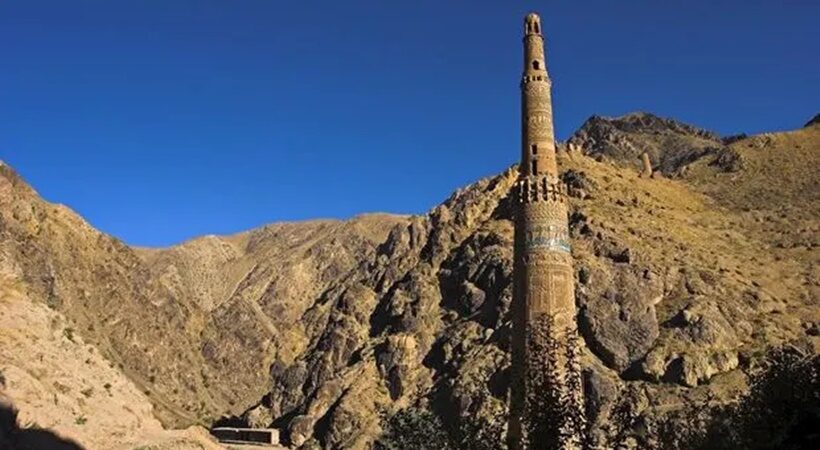While Qutb Minar is a celebrated monument in the middle of the bustling city of Delhi, only a few know about its cousin Jam Minar, 1,500 kms away in a deserted valley in Afghanistan. The connection between the two structures is much closer than one can imagine. Revealing complex histories of dynastic politics, hierarchies and cultural experimentation, it becomes essential to analyse the Qutb Minar in the context of its distant cousin.
Upon closer look, it becomes apparent that both the Minars were built to commemorate the war victories of the Ghurid Dynasty (1190s CE). The dynasty was ruled by two brothers: Ghiyas-al-din Muhammad and Mohammad Ghori. Unlike the frequent bloody power successions in Turkic history, the brothers opted to rule together instead. While Ghiyas al-Din mostly looked after the Western frontiers from his seat in Firuzkoh, Muhammad Ghori focused his efforts on the east, in India. However, there was definitely a sense of deference towards Ghiyas al-Din on the part of his younger brother.

The last decades of the 12th century witnessed the Ghurid Empire at its peak. Under the effective military leadership of Muhammad Ghori and his elder brother Ghiyas al-Din Muhammad, the Ghurids supplanted the Ghaznavids in Afghanistan and eventually captured Delhi after defeating Prithviraj Chauhan in the decisive Second Battle of Tarain (1192 CE). To mark this symbolic victory, the construction of the Jam Minar and the Qutb Minar was commissioned, rather in the style of the Ghaznavid empire.
The Jam Minar now stands in a scenic valley in the Ghor province of Afghanistan. Dressed in stucco and turquoise tiles, the Minaret soars in the sky in a recluse environment. The construction of the Jam Minaret was completed in 1194 CE under the leadership of the elder Ghurid brother Ghiyas al-Din Muhammad. The name of the sultan is inscribed right below the first balcony: “Ghiyas al-Din Muhammad ibn Sam, Sultan Magnificent! August King of Kings!” in the magnificent turquoise glazed letter. It is interesting to note that the name of the younger brother is seemingly missing from the Jam Minar.

Construction of the Qutb Minar was a stretched-out affair, changing hands to different political powers. The construction began in the mid-1190s under the supervision of Qutb-al-Din Aibak, a rising general under Mohammad Ghori. The first storey got completed in the lifetime of the Ghurid brothers. The common conception is that the minar was commissioned by Qutb-al-Din Aibak, hence being called the “Qutb” Minar. However, it becomes clear that the Qutb Minar was very much a Ghurid project. It is also here that the younger brother Mohammed Ghori left his mark with his name and titles inscribed for eternity, miles away from the authority of Ghiyas al-Din.
After the death of the Ghurid brothers, their general Qutb-al-Din Aibak carved out his own dynasty in South Asia. It was his successor Iltutmish who finally completed the Qutb Minar around 1220 CE.



















